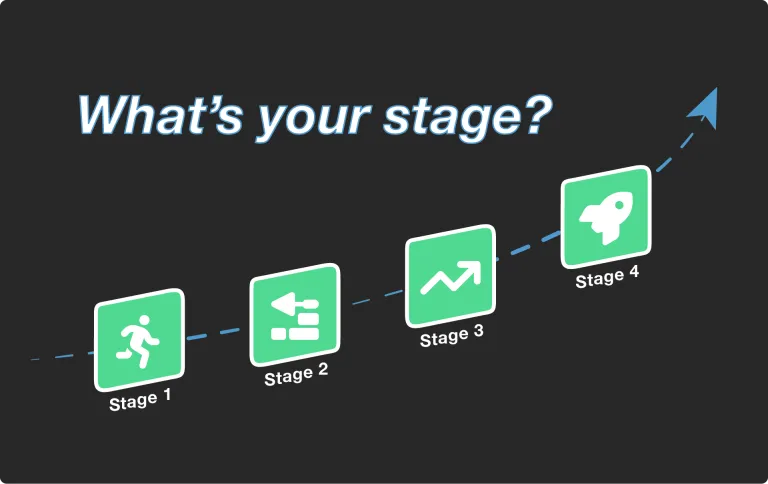In an age when anyone can create a website, your homepage must communicate clearly and effectively in order to be useful for your business. In fact, your homepage can make or break your opportunities to succeed in the marketplace.
Before you despair about how difficult it may be to get your homepage to perform like you need it to, don’t worry! Building a high-performing homepage is actually quite simple. And it’s something that most small businesses don’t do very well.
Homepages that sell generally have a handful of elements in common. They aren’t necessarily the most fancy or high-design, but that’s okay because they are really good at clear communication with visitors.
Last week, I told you about the 3 jobs your website needs to accomplish. In this issue, I’ll introduce you to a seven-part framework that will help you build a high-performing homepage that will accomplish those 3 jobs. These tried-and-true elements will help your message resonate clearly with your homepage visitors and turn them into customers.
I’ll continue to illustrate concepts with a fictitious pest control company in this issue. Let’s get started.
1. Focus on the customer, not yourself
This is more of an overarching principle for your homepage - you need to focus on the customer, not yourself.
Remember, your customers don’t really care about you. They’re looking for a solution to their own problem or pain.
You’ve got to earn the right to talk about yourself. You’ll do that by focusing most of your content on the customer you’re trying to serve.
The first thing your website should do is tell the visitor what problem you solve so that they know whether or not they’re looking in the right place.
2. Clearly identify the problem you solve
Don’t make them guess. Spell it out in clear, visual language.
This works best when you use the same language your customers use. Don’t use fancy industry terms. Speak in plain language that your customers will understand.
And you absolutely must constrain yourself to a single problem or pain at this point. Even if you offer multiple products or services, do your visitors the favor of condensing the problems you solve into one they can really relate to. Once you have their attention, you can always explain more about your offerings.
For example, the very first thing our pest control company might have at the top of their website could be the following headline:
Keep your home spider-free!
And we’d accompany that with additional imagery that helps visitors to visualize a happy, spider-free future.

Right out of the gates, visitors get the information they’re looking for: “This company can help me keep spiders (and presumably other pests) out of my home”.
Now that you’ve identified the problem you solve, it’s time to turn up the heat.
3. Agitate the problem
Simply identifying the problem isn’t enough to move visitors to action. It’s important to remind them of how troublesome the problem or pain really is.
The best way to do this is to tap into more emotional and visceral language that helps the customer experience the problem again.
By way of example, the next section of the pest control homepage may ask a handful of questions:
Aren’t you tired of seeing spiders and other pests crawl across your ceiling above your head while you’re lying in bed?
And isn’t it creepy when you have to get a piece of tissue to transport the little nasty to the toilet?
Your home should be a place of peace and rest, not the heebie-jeebies.
In this section, it’s appropriate to use images that stir up the problem. A picture of a hairy spider would be great.

Now that you’ve escalated the problem and spent time focusing on the visitor, you’ve earned the right to position yourself as the solution to their problem.
4. Position yourself as the guide
You have the visitor’s attention now because you’ve really focused on their problem and how it feels to be in their shoes.
Now they’re wondering if you really are able to provide a solution. The object of this section is to talk about yourself just enough to demonstrate empathy and authority.
Your customers want to know that you can relate to their problem. Do you really know how they feel?
The pest control company may have a short blurb like the following:
We get it! We hate seeing creepy crawlies on our bathroom floor in the middle of the night, too! Spiders and other critters bring great balance to our environment, but they belong outside, not inside where we eat and sleep.
And then you should move right on to establishing your credibility and authority. Are you really qualified to solve this problem?
Again, the pest control company might say:
At Pest Inc., we’ve been helping customers like you keep things with more than four legs out of their homes for more than 10 years. All of our technicians are fully certified and we’re committed to using organic pesticides that won’t harm you or your loved ones. We help hundreds of other customers in your area feel safe and comfortable in their homes.
This is also a great place to provide any awards, certifications, or testimonials that will help to solidify your authority and credibility.
Next, it’s important to give the customer a plan of action.
5. Present a plan
The goal of providing a plan is to help the customer take the first step toward solving their pain. The plan you present does not need to be comprehensive - it just needs to be enough to help them see how they can begin.
Ideally, you want to give a high-level overview of what the process from start to finish will look like in three simple steps. This works well because humans tend to process ideas in chunks of three very well. Once you begin to move beyond three steps or items, your customer will have a difficult time keeping track.
Continuing the pest control example:
Having a spider-free home is easy!
- Schedule a free consultation call with us today.
- We’ll come treat your home once per month.
- You relax in your spider-free home.
Presenting a plan isn’t always enough, though. So now you want to return to the customer’s pain.
6. Make the choices tangible
The goal of this step on your site is to remind the visitor of their options. They can either continue experiencing the problem, or they can take action to resolve it.
What will life look like if the customer does nothing? What could life look like when the problem is resolved?
By putting these two alternate futures next to one another, you’ve created a stark contrast to help the visitor consider their options.
The choice is yours:
- Keep sharing your space with spiders and other crawly critters OR
- Call us today and move toward a pest-free living space so you can sleep in peace.
The final element you need to incorporate is a strong call to action.
7. Tell the visitor what to do next
If you don’t clearly tell your visitor what to do next, then all of your other work will probably go to waste. You still need to tell them what to do.
You don’t want your customers to have to guess. Don’t make them think. Give them the next step.
You may have noticed that a couple of these steps already have a call to action in them. The reason this last element exists is that you need to go back through your entire homepage and sprinkle in the call to action in many different places. People often need to see a call to action multiple times before they act.
The language you use should be clear and strong. Don’t be shy about this.
Examples of weak calls to action:
- “Learn more”
- “Get started”
- “Download”
Examples of strong calls to action:
- “Buy now”
- “Schedule a call today”
- “Get a quote now”
This isn’t pushy or manipulative. It’s clear. The customer obviously gets to decide what to do next. But at least they know exactly what they need to do in order to work with you.
How this will make you money
If your website does these three things well, you will make more money.
- Be clear about the pain or problem you solve.
- Establish yourself as the solution.
- Tell your customer what to do next.
The seven steps in this issue will ensure that your homepage accomplishes those three jobs.
Do this next
Audit your own site. You could do this easily this week.
Have a look at your own website and see if you can identify the different sections of your website that accomplish the seven steps.
- Is your call to action clear? Is it repeated?
- Are you talking more about yourself? Or your customer?
- Have you clearly identified the problem you solve?
- Have you presented a plan?
If you want help with auditing your site, buy my Homepage Audit. For $100, I’ll audit your site and tell you exactly what you need to do to fix it.
To thriving,
Zach





